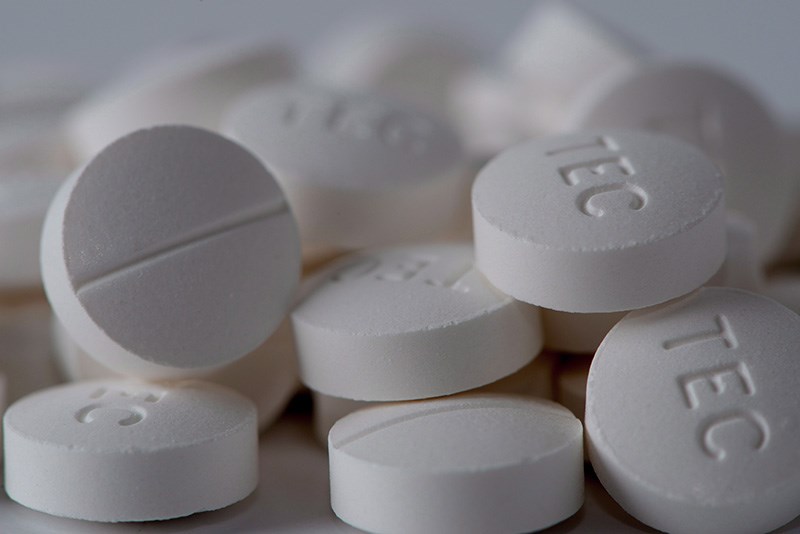Members of B.C.’s addiction recovery community are outraged after a medical health officer working on the overdose crisis suggested addicts should use prescribed drug treatments for the rest of the lives.
“[There’s] a need for lifelong treatment that will allow you to function,” Patricia Daly, leader of Vancouver Coastal Health’s response to the overdose crisis, told delegates at the Union of B.C. Municipalities conference Sept.11.
Yet while long-term medication is a viable option for maintenance while in 12-step recovery programs, there is public pressure to remain completely drug free, which may not be as effective a long-term solution, Daly said.
“People will celebrate they’re in abstinence-based recovery,” she said. “There’s stigma in relapse.”
Giuseppe Ganci, director of community development for New Westminster’s Last Door, an accredited 100-bed addiction treatment centre, said Daly’s statements only add to the stigma addicts already face.
“What she is doing is prejudice and creates the stigma that is killing thousands of Canadians,” Ganci said.
There were 601 fentanyl-related drug overdose deaths in B.C. between January and June, an 11 per cent decrease compared to the same 2017 period, the BC Coroners Service said.
Overdose deaths jumped 43 per cent from 914 in 2016 to 1,422 in 2017. Daly said the province is “on track to have about the same number of deaths as last year.”
“The recommended treatment for opioid addiction is opioid antagonists,” she said, citing a review by the provincial coroner into 1,854 overdose deaths. “The death review found none of those people had been on suboxone and none had been on methadone.”
She suggested those drugs, which are ao-called opioid antagonists that block opiates, as ongoing treatments. Also, “we now have a very good oral morphine,” she said.
Daly said about 21,000 are currently on such treatment with about another 400 every month.
Vancouver comedian Mark Hughes will be 12 years free of methadone Sept. 14 after years of street opioid use.
He said methadone helped free him of street drugs.
“While I was on it, I knew my life would never improve beyond a certain point,” Hughes said. “The goal was not to be dependent on it.”
Hughes credits 12-step-based recovery, therapy, community involvement and “taking responsibility” for his life for moving him away from active drug use.
Daly said naloxone currently being used to revive people who have overdosed is an antidote but not a solution for moving out of active addiction.
“The idea that they will recover from their addiction is perhaps not the right word to use,” she said.
“Ask her to say that to the 20,000 recovering addicts at Recovery Day,” Ganci said.
Ganci chairs the Recovery Day BC Society, which hosted Recovery Day event in New Westminster Sept. 8.
Daly’s suggestions, though, appear in line with a 2017 report on the opioid crisis by the Federation of Canadian Municipalities (FCM) mayors’ task force.
The report recommends implementation of the Canadian Drugs and Substances Strategy’s four pillars of harm reduction, treatment, prevention and enforcement.
The FCM report recommends expanded “access to a range of treatment options including medically supervised opioid substitution therapy (OST), including injectable options for people who have not found success with other interventions, and elimination of remaining barriers that limit access to OST.”
It leaves out the federal strategy’s suggestion of rehabilitation and support for accredited treatment centres such as the one Ganci works at.
Other speakers at the UBCM talked of collecting data on groups to be targeted for awareness campaigns. Those include recreational drug users, street-level users, high-functioning regular users and First Nations people living away from home.
“Each on of these audiences allows us to put a bit more perspective on what we’re dealing with,” said Regan Hansen, director of partnerships and engagement with the Ministry of Mental Health and Addictions.
But, she added, there are those who won’t talk about their drug use.
“We need to recognize this is a problem,” Hansen said. “There are an awful lot of us who are making it difficult for people to open up and talk about their drug use.”
“We can help people out of the darkness and into hope and recovery,” Hansen said.
The B.C. cities with the highest death tolls are Vancouver, Surrey and Victoria.
Males accounted for 476 deaths. Some 125 women overdosed.
Six were under 18; 45 were over 60 years of age.
So far this year, 88 per cent of overdose deaths occurred inside and 11 per cent occurred outside in vehicles, sidewalks, streets or parks.
There were no deaths at supervised consumption or drug overdose prevention sites, the Coroners Service said.



